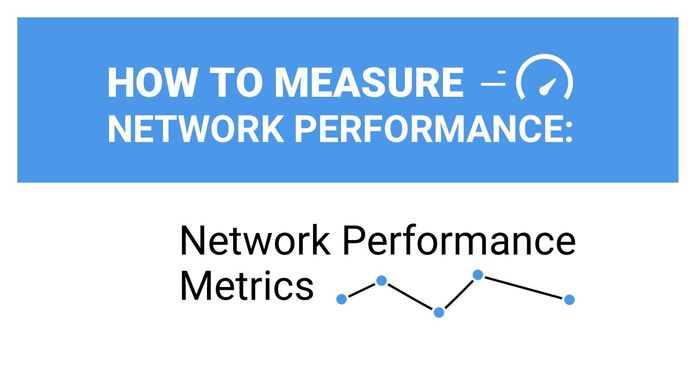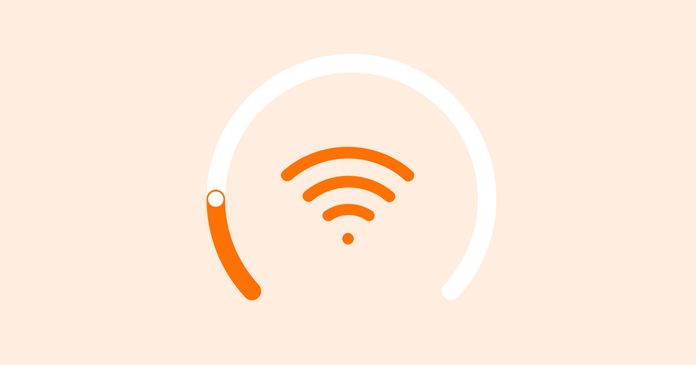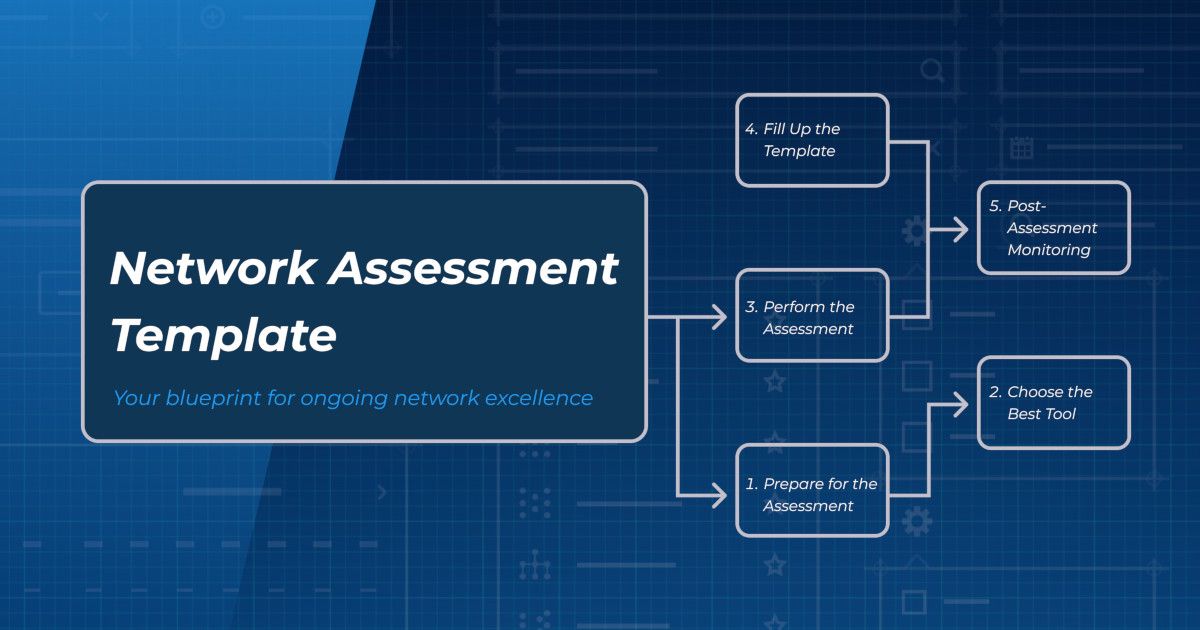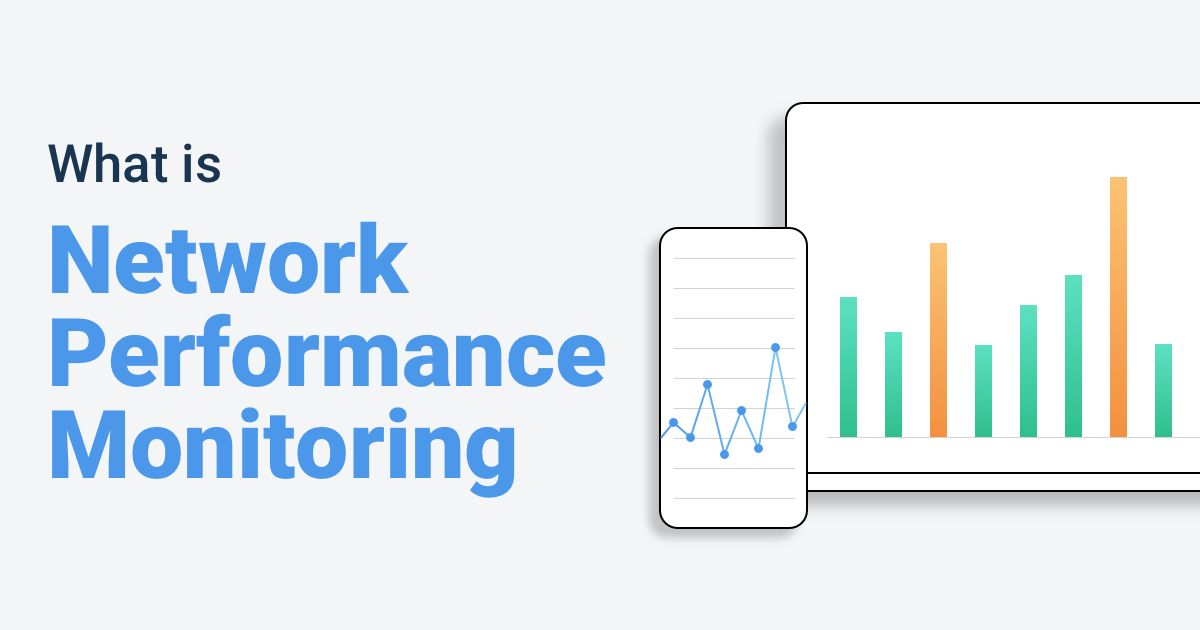Table of Contents
Table of Contents
As networks of educational institutions continue to get more complex, so does the demand for robust network monitoring and security measures. Without a secure and optimized network, student records become vulnerable to hacking, bandwidth congestion disrupts essential services, and online assignments remain unfinished. When lesson plans heavily rely on video-conferencing for seamless education delivery, the margin for errors or outages is slim.
Thus, ensuring uninterrupted connectivity and safeguarding against potential threats and bottlenecks are paramount in facilitating effective teaching and learning experiences.
Network monitoring encompasses various aspects such as security, traffic monitoring, and network performance monitoring (NPM). It involves evaluating and tracking diverse network metrics to assess the quality of services provided by a network, with a primary focus on the end-user perspective.
By monitoring various aspects of network performance IT pros in educational institutions can proactively identify and address potential issues that may impact the seamless delivery of online learning resources, communication tools, and other essential services. This not only ensures a smooth and efficient digital learning environment but also enhances the overall user experience for everyone involved in the educational community.
Key points to remember about network monitoring include:
1. Measuring Network Performance:
Network performance is quantifiable and can be assessed through metrics such as packet loss, jitter, throughput, and more. The ability to measure network performance is crucial, as it enables IT teams to identify areas for improvement and implement targeted optimizations to enhance overall network performance.
2. Evaluating Network Quality:
Network quality encompasses factors such as stability, speed, and reliability of the network connection. A high-quality network provides a stable and fast connection, while a low-quality network may show symptoms such as sluggishness, high latency, or frequent interruptions. Evaluating network quality helps IT teams identify potential issues and take proactive measures to maintain optimal performance.
3. Prioritizing the End-User Experience:
Ultimately, the end-user perspective determines the success or failure of network performance. Good network performance is characterized by the network's ability to meet or exceed user expectations, delivering seamless connectivity and responsive services. By prioritizing the end-user experience, educational institutions can ensure that their network infrastructure aligns with the needs and preferences of students, faculty, and staff, fostering a positive digital learning environment. This includes maintaining stable connections for accessing essential academic tools, such as research platforms, e-learning portals, and assignment help services that support learners in managing their coursework effectively. Reliable network performance ensures that academic support platforms remain accessible at all times, helping learners meet deadlines and achieve their educational goals without interruptions.
Learn how to measure network performance with key network metrics like throughput, latency, packet loss, jitter, packet reordering and more!
Learn more

Network monitoring plays a pivotal role in proactively identifying and addressing potential issues before they escalate into disruptive events. Let's dive into why network monitoring is crucial for universities and educational institutions:
Proactive Issue Detection
Educational institutions operate in dynamic environments where the demands on network infrastructure fluctuate constantly. From peak hours during class schedules to off-peak periods during breaks, the network experiences varying levels of usage. Network monitoring tools provide real-time insights into traffic patterns, network performance metrics, and device health, enabling IT teams to detect anomalies and potential bottlenecks preemptively. By identifying and resolving issues before they impact users, network monitoring helps minimize downtime and ensures uninterrupted access to critical resources.
Performance Optimization
Optimizing network performance is essential for delivering a seamless user experience across the educational ecosystem. Network monitoring tools track key performance metrics such as latency, packet loss, throughput, jitter, allowing IT administrators to pinpoint areas for improvement. By analyzing performance data and identifying optimization opportunities, educational institutions can fine-tune their network infrastructure to deliver optimal performance, enhancing productivity and satisfaction among students, faculty, and staff.
Compliance and Security
Maintaining compliance with regulatory standards and safeguarding sensitive data are paramount concerns for educational institutions. Network monitoring plays a crucial role in ensuring compliance with data protection regulations such as GDPR and HIPAA, as well as safeguarding against security threats such as malware, phishing attacks, and unauthorized access attempts. By monitoring network traffic and identifying suspicious activities in real-time, IT teams can mitigate security risks and protect the confidentiality, integrity, and availability of institutional data and resources.
Resource Allocation with Historical Data
Effective resource allocation and capacity planning are essential for meeting the evolving demands of educational institutions. Network monitoring tools provide valuable insights into network usage trends, past application performance, and resource utilization patterns. One effective way to manage limited resources is to monitor historical throughput measurements and use them to decide whether to update hardware, adjust network topology, and when traffic shaping and QoS may resolve issues.
By leveraging historical data, universities can optimize resource allocation, scale their infrastructure to accommodate growth, and future-proof their network environments.
Schools and universities rely heavily on robust network infrastructure to support a myriad of activities ranging from online learning platforms to administrative operations. Amidst this backdrop, ensuring seamless network connectivity and efficient IT operations becomes a top priority for educational institutions.
With its comprehensive suite of network monitoring tools, Obkio emerges as the go-to choice for schools and universities seeking to enhance their network management.
Let's explore how Obkio's Network Monitoring Tool optimizes IT operations within educational institutions and enables them to meet the evolving demands of digital learning environments.
Comprehensive Network Monitoring:
Obkio's monitoring tools provide educational IT staff with comprehensive visibility into network performance across campus-wide infrastructure. With features such as real-time monitoring, unified communications monitoring, proactive alerting and troubleshooting, and detailed analytics, Obkio enables IT administrators to gain deep insights into network health, identify potential issues, and optimize performance.
Automated Diagnostics:
Obkio's automated diagnostics capabilities streamline troubleshooting processes, reducing mean time to resolution (MTTR) and enhancing operational efficiency. By automatically detecting and diagnosing network performance issues, Obkio empowers IT teams to address issues promptly, minimizing downtime and ensuring uninterrupted access to critical resources.
Customizable Dashboards:
Obkio's customizable dashboards provide IT administrators with a centralized view of key network metrics, facilitating informed decision-making and proactive management. With the ability to tailor dashboards to specific requirements and preferences, educational institutions can focus on monitoring the metrics that matter most, optimizing network resources, and delivering an enhanced user experience.

Flexible, Distributed Monitoring Architecture:
In addition to comprehensive monitoring capabilities, Obkio offers a flexible, distributed monitoring architecture tailored to the unique needs of educational institutions. This architecture enables universities and schools to deploy monitoring agents across multiple campuses and network locations, ensuring comprehensive coverage and visibility into network performance. With a distributed monitoring approach, educational institutions can scale their monitoring infrastructure according to their evolving requirements, accommodating growth and changes in network topology effectively.
Simple and Easy to Use:
In educational institutions, IT teams may not always possess extensive expertise in network management. Therefore, having a network monitoring solution that is simple and easy to use is crucial. Obkio offers a user-friendly interface that does not require advanced networking knowledge to navigate. With Obkio, IT teams can easily set up monitoring sessions, interpret network data, and troubleshoot issues without the need for specialized training. The platform simplifies the complexities of network monitoring by providing intuitive dashboards, clear metrics, and actionable insights.

When it comes to optimizing network monitoring for schools and universities, you need to be productive to keep monitoring, keep fixing, and keep optimizing.
- 14-day free trial of all premium features
- Deploy in just 10 minutes
- Monitor performance in all key network locations
- Measure real-time network metrics
- Identify and troubleshoot live network problems
So, what are you waiting for? Start monitoring proactively today and keep your students and academics happy!

In contrast to local schools and small firms, universities typically operate expansive Wide Area Networks (WANs) that span multiple campuses and encompass a vast array of buildings. With tens of thousands of students accessing these networks across various locations, the scale and intricacy of these infrastructures present formidable challenges for IT teams entrusted with their monitoring and management.

Scale and Complexity of the Education Network:
Universities are hubs of connectivity, accommodating a diverse student body and faculty spread across numerous campuses. More than 42% of students utilize two or more devices daily, further compounding the complexity of network management. The sheer volume of devices and connections within these distributed networks makes manual monitoring impractical, showing a need for automated solutions like Obkio’s Network Monitoring to ensure comprehensive oversight.
With networks spanning multiple sites and incorporating a mix of on-premises and cloud infrastructures, educational institutions face the challenge of maintaining seamless connectivity across diverse environments. To add to the complexity, educational IT infrastructures often feature hardware from different manufacturers, each with its own set of protocols and management interfaces. This diversity can lead to vendor lock-in and compatibility issues, further complicating the task of monitoring and managing the network effectively.
Thus, having an all-in-one monitoring solution becomes indispensable for educational institutions. Such a solution should support common protocols like SNMP, WMI, or Flow, enabling comprehensive monitoring of network devices and systems regardless of manufacturer.
Unique Traffic Patterns of Networking in Schools
University networks are like rollercoasters, with traffic going up and down throughout the day. Weekdays from 8 am to 5 pm witness increased network utilization, driven by academic activities and administrative operations. On the other hand, substantial portions of the network remain underutilized during breaks and holidays, posing challenges in resource allocation and capacity planning.
Bandwidth Management
The flow of students accessing university networks places a substantial strain on available bandwidth, increasing the risk of congestion and service degradation. Effective bandwidth management and Quality of Service (QoS) becomes imperative to prevent slowdowns or outages, requiring the implementation of flow monitoring solutions capable of delivering granular traffic analysis.
Overworked IT Resources
Despite increased investments in personnel and tools, IT departments within educational institutions grapple with resource constraints and escalating demands for efficiency. Multipurpose technicians are common in most cases, tasked with juggling diverse responsibilities amidst increasing pressure to achieve more with limited resources. Funding may be easier to come by, but it's still not always abundant, and IT workers frequently choose the cheapest tools available, which leads to an unorganized chaos of disjointed, frequently mismanaged solutions.

Continuous network monitoring brings forth a plethora of advantages not only for the IT department but also for teachers, students, and other employees within educational institutions.
1. Enhanced User Experience for Teachers and Students:
For teachers striving to deliver engaging and interactive lessons, uninterrupted access to online resources and collaborative tools is indispensable. Continuous network monitoring ensures that these resources remain accessible, facilitating seamless integration of technology into the classroom environment. Similarly, students rely on network connectivity for accessing course materials, participating in virtual classrooms, and submitting assignments. By maintaining optimal network performance, continuous network monitoring enhances the learning experience and fosters student engagement.
2. Increased Productivity and Efficiency for University Staff:
Beyond the classroom, employees across various departments rely on network connectivity to perform their day-to-day tasks efficiently. Administrative staff depend on network access for managing student records, processing admissions, and communicating with stakeholders. Continuous network monitoring minimizes disruptions and network downtime, enabling employees to accomplish their responsibilities without interruption. This, in turn, enhances productivity and contributes to the smooth functioning of the institution.
3. Complete Visibility and Timely Issue Resolution for IT Departments:
Despite having large IT departments, many educational institutions may lack specialized expertise in network monitoring and troubleshooting. Network monitoring tools serve as a valuable resource for bridging this expertise gap, providing IT teams with the insights and capabilities needed to effectively monitor and manage network performance.
Additionally, network monitoring software empowers the IT department and network specialists with comprehensive visibility into the entire campus infrastructure. Through features like network mapping, administrators gain insights into the network topology, infrastructure layout, and the multitude of devices interconnected across the campus.
One of the key benefits of network monitoring software is its ability to deliver real-time alerts to IT personnel. By monitoring bandwidth utilization and device status in real-time, the software detects anomalies such as irregular bandwidth spikes or device failures. These alerts enable IT teams to take immediate action, mitigating potential disruptions and ensuring seamless network performance.
To summarize, the benefits of continuous network monitoring extend beyond the IT department to encompass all stakeholders within educational institutions. By ensuring reliable connectivity, enhancing productivity, facilitating timely issue resolution, and supporting strategic decision-making, continuous monitoring contributes to a positive and conducive learning environment for teachers, students, and employees alike.
How to measure bandwidth, identify issues & optimize network performance. Use Obkio's Network Performance Monitoring tool for easy bandwidth monitoring.
Learn more

Ensuring seamless network performance and optimal user experience within educational institutions demands a robust monitoring solution tailored to their unique needs. At Obkio, we understand the complexities of university networks and strive to simplify the deployment and management of network performance monitoring.
With our user-friendly Onboarding Wizard and dedicated support team, universities can deploy Obkio effortlessly and efficiently.
Obkio is an intuitive Synthetic Network Performance Monitoring software designed to monitor network performance and core applications for educational institutions such as Microsoft Teams and Zoom. By seamlessly monitoring end-to-end performance, Obkio identifies network issues, collects crucial data on network performance, and enhances the overall end-user experience.

Upon deployment, Obkio integrates seamlessly into your IT infrastructure, taking the role of a dedicated network administrator. Unlike traditional monitoring solutions, Obkio operates autonomously, constantly running in the background to monitor network performance without requiring manual intervention.
This proactive approach ensures that potential issues are detected and addressed promptly, minimizing downtime and optimizing network performance for uninterrupted operations.
- 14-day free trial of all premium features
- Deploy in just 10 minutes
- Monitor performance in all key network locations
- Measure real-time network metrics
- Identify and troubleshoot live network problems

Universities can build their custom plan and get a volume discount with Obkio's flexible pricing options. Explore our pricing calculator to tailor a plan that fits your institution's needs and budget.

To ensure proactive monitoring of network performance across all network locations, deploying Network Monitoring Agents is essential. These agents continuously assess network performance in critical locations such as offices, data centers, and cloud environments using synthetic traffic, enabling the early identification of network issues before they impact end-users.
Monitoring sessions facilitate the exchange of UDP traffic to check network performance between each pair of agents. This lightweight traffic is non-intrusive and highly secure, eliminating the need for packet capture and respecting users' privacy. Furthermore, it does not require any changes to device configurations, simplifying the deployment process.

For instance, by simulating a student accessing a web application from various locations throughout the campus, network monitoring agents can ensure optimal application performance and deliver a positive user experience. Similarly, these agents can simulate traffic during peak network usage periods to assess the network's capacity to handle high traffic loads effectively. This proactive approach to network monitoring enhances reliability and ensures uninterrupted connectivity for all users.
Utilizing Obkio's advanced capabilities, synthetic traffic is monitored every 500 milliseconds, allowing for the real-time measurement of network performance twice per second. Unlike traditional solutions that execute periodic checks at varying intervals, Obkio's Network Performance Monitor continuously monitors network performance. This continuous monitoring approach is instrumental in swiftly identifying intermittent network issues that may result in network slowdowns.

Furthermore, real-time measurement of network metrics is integral to proactive network monitoring. To stay ahead of potential issues and ensure optimal network performance, several key network metrics should be measured. By monitoring metrics such as latency, packet loss, and throughput in real-time, IT teams can proactively identify anomalies and address them promptly, minimizing downtime and optimizing network performance for uninterrupted operations.
With Obkio's continuous network monitoring capabilities, staying vigilant isn't a 24/7 requirement.
Obkio offers the flexibility to establish automatic monitoring alerts, notifying designated team members whenever network issues are detected anywhere within the network. Additionally, it can alert you to any degradation in network performance, allowing preemptive action before problems escalate.

Automated network monitoring alerts play a pivotal role in proactive network monitoring, enabling IT teams to swiftly identify potential issues and initiate corrective measures before they impact network performance or user experience.
Real-Time Notifications: By configuring automatic alerts for critical network metrics like bandwidth utilization, latency, packet loss, and availability, IT teams receive instant notifications when these metrics surpass predefined thresholds or deviate from expected norms.
Identification of Security Threats: Automated alerts empower IT teams to proactively monitor network security and detect potential threats such as malware infections or unauthorized access attempts.
Rapid Detection of Network Issues: By configuring alerts for network metrics such as throughput or bandwidth utilization, IT teams can pinpoint potential performance issues and implement corrective measures before they impact user experience or business operations.
Embarking on network performance monitoring requires distinguishing between good and bad performance. Obkio simplifies this process by collecting performance history, enabling users to delve into past network performance with minute-by-minute granularity. This historical data not only establishes a baseline of network performance but also facilitates the troubleshooting of previous network issues.
Setting a network baseline and maintaining a history of network performance metrics is a fundamental aspect of proactive network monitoring. By establishing a baseline, IT teams can delineate normal network performance and define thresholds for alerts when network metrics deviate from expected levels.
Identifying Patterns: By aggregating data on network metrics such as bandwidth utilization, latency, packet loss, and availability, IT teams can construct a historical record of network performance. This enables the identification of patterns and trends in network behaviour, aiding in the detection of anomalies and proactive issue resolution.
Detecting Performance Changes: Maintaining a historical repository of network performance metrics is crucial for detecting changes in network behaviour and preempting potential issues. By comparing current network performance metrics to historical data, IT teams can swiftly pinpoint deviations from expected levels and implement corrective measures before users experience disruptions.
Planning for Future Changes: Additionally, leveraging historical network performance metrics supports network capacity planning and forecasting future network requirements. By analyzing trends in network behaviour over time, IT teams can anticipate areas of the network that may necessitate additional capacity or upgrades to accommodate future growth and ensure uninterrupted operations.


With the ever-growing number of students, teachers, and faculty members relying on these networks for learning and administrative tasks, the stakes for network reliability have never been higher. Coupled with the diverse range of applications and devices accessing them, network monitoring presents numerous challenges for IT teams. From internet connectivity issues to VPN and remote unified communications performance issues, the potential for network disruptions is vast.
By investing in proactive monitoring and troubleshooting capabilities, universities can safeguard their network infrastructure, optimize performance, and meet the ever-growing demands of students, faculty, and staff. With Obkio's intuitive monitoring tools and dedicated support, universities can navigate the complexities of network management with confidence, ensuring a reliable and efficient digital learning environment for all stakeholders.

Put It to the Test: Trying Is the Ultimate Way to Learn!
Networks may be complex. But Obkio makes network monitoring easy. Monitor, measure, pinpoint, troubleshoot, and solve network problems.
- 14-day free trial of all premium features
- Deploy in just 10 minutes
- Monitor performance in all key network locations
- Measure real-time network metrics
- Identify and troubleshoot live network problems













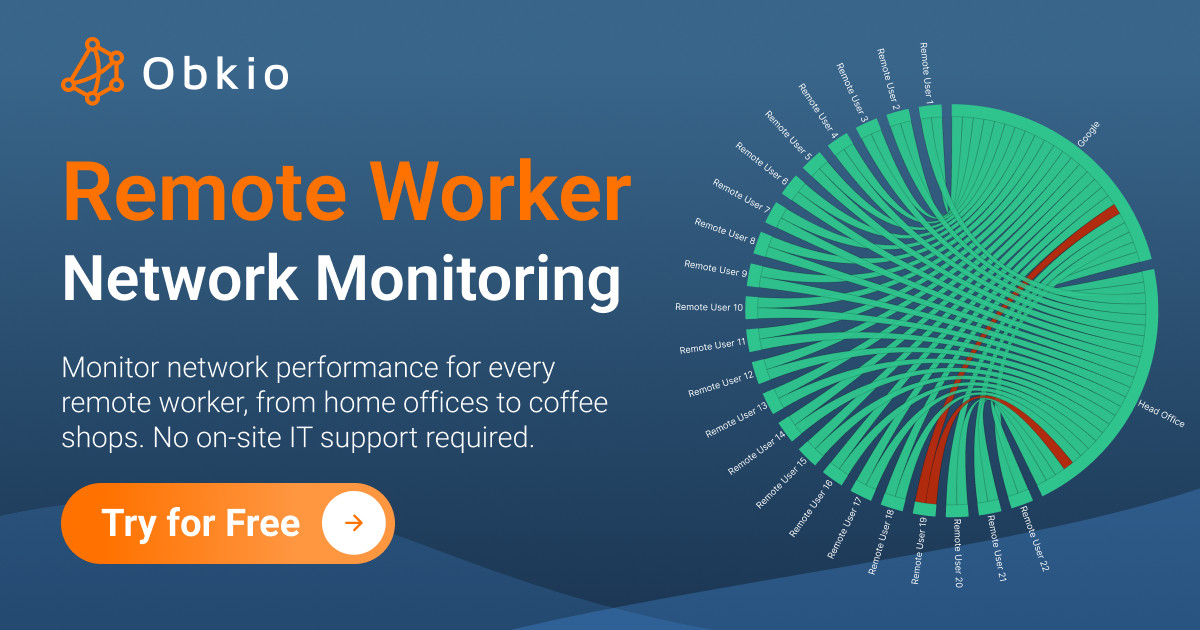













 Obkio Blog
Obkio Blog



